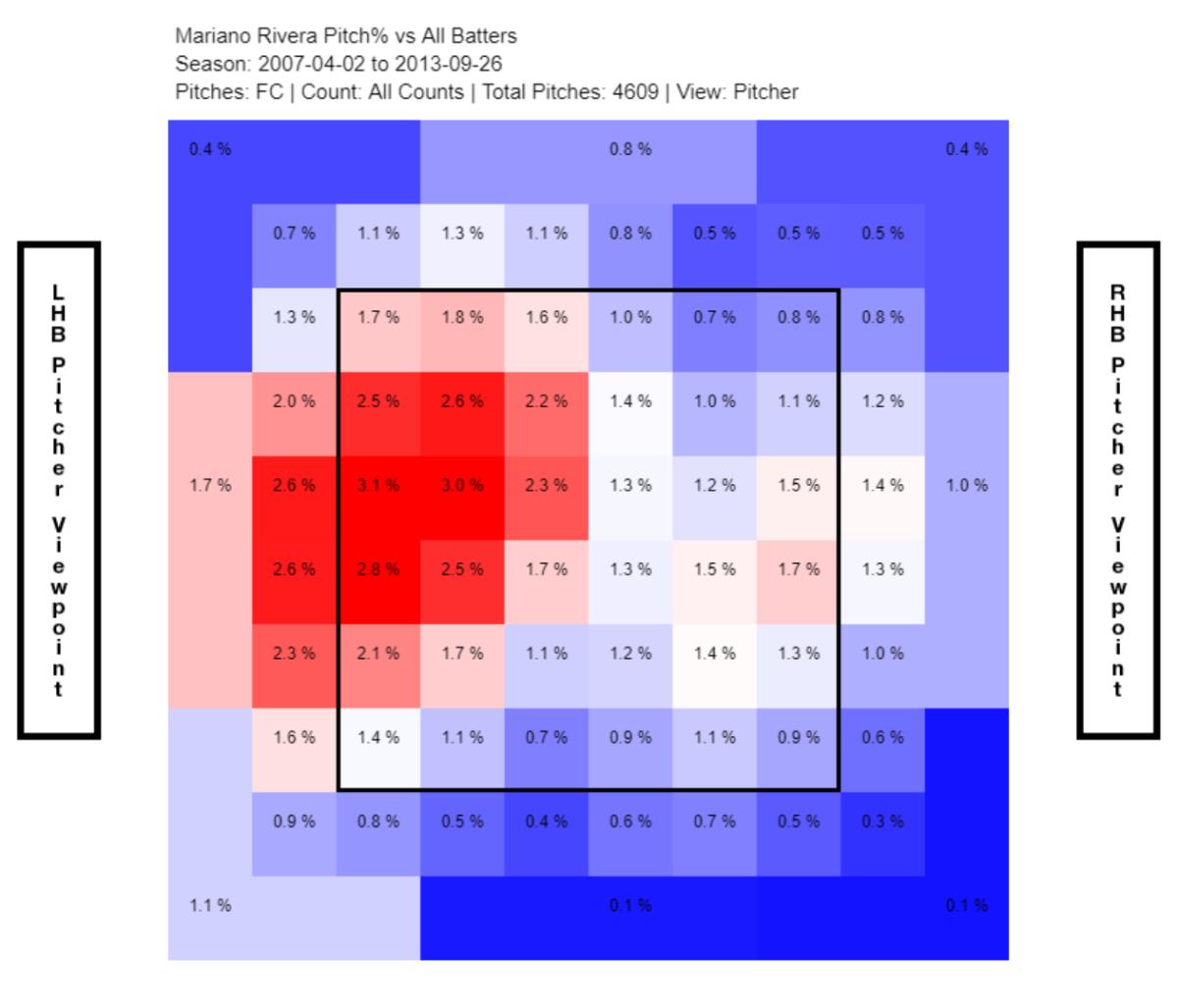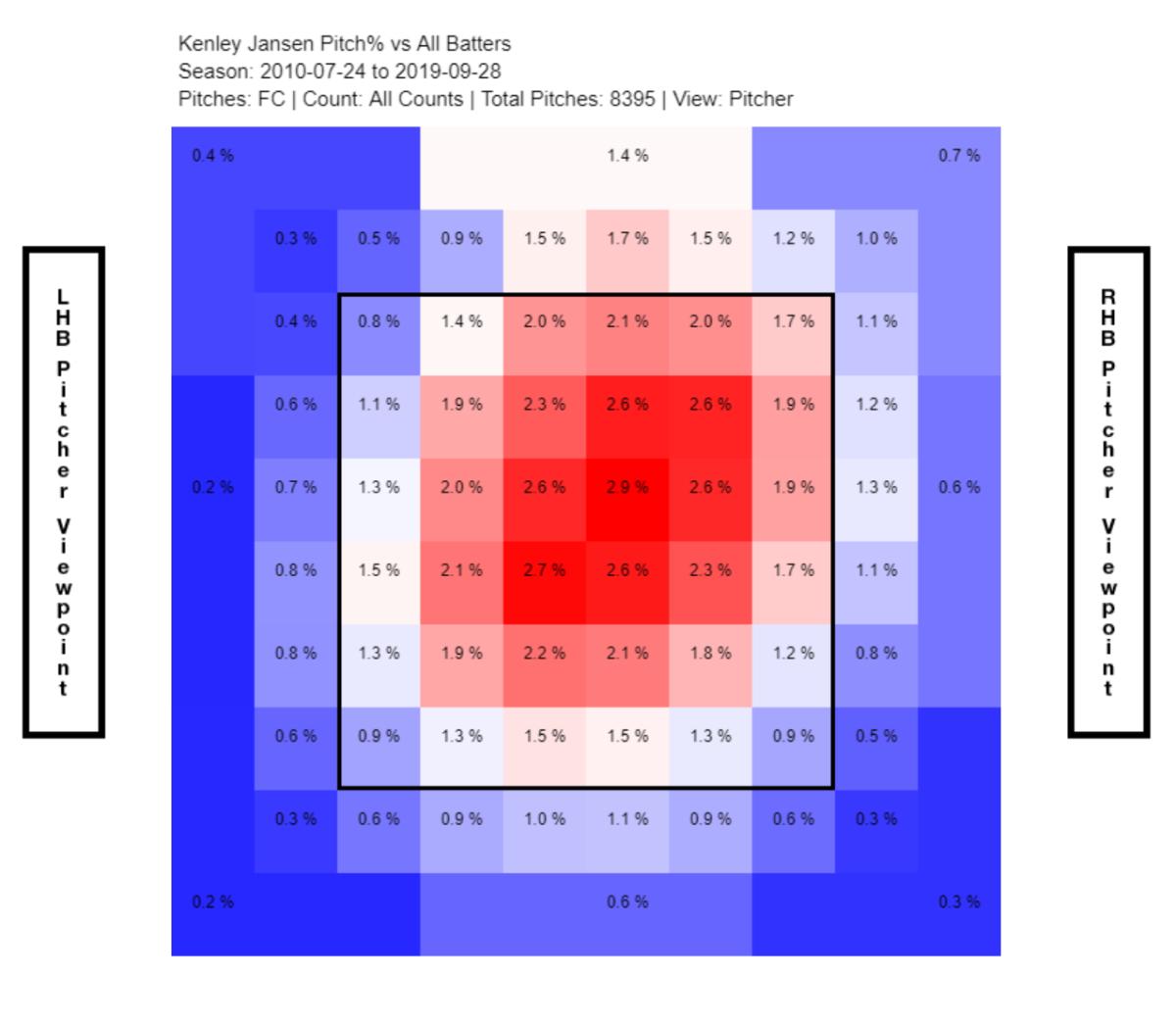Emmanuel Clase, the 100-mph groundball pitcher

Raw, elite velocity has returned to its rightful place in the pantheon of pitching commodities, along with its nerdy, less-sexy brother, spin rate. For those reasons alone, new Cleveland Indians reliever Emmanuel Clase has vaulted from unknown commodity to centerpiece in a deal for a two-time Cy Young winner.
But are those tools enough? Probably. The departed Corey Kluber was once an afterthought in the minor leagues who combined with the Cleveland brain trust to put himself on a Hall of Fame track.
With the tools that Clase holds and the development power of assistant pitching coach Ruben Niebla, it seems inevitable that the Indians now have a bonafide, high-leverage reliever of the future in their grasp. It is just up to them to mold him like they have done so many times before.
For his 100th percentile fastball velocity and 97th percentile spin rate, Clase has never boasted a high strikeout rate relative to similar fireballers. Aside from 7 innings at High-A last season, the righty's highest K% in any stop was 25.7% over 28.1 innings at Low-A in 2018. That mark would have placed him 69th among qualified ML relievers last season, below the likes of Tyler Clippard and Nick Wittgren.
The obvious conclusion is that the Indians targeted Clase because his elite tools are malleable into a swing-and-miss star, regardless of results to this point. That much is undeniable.
Not too much deeper into the results, one finds another standout attribute. Clase has an elite groundball rate. His lowest GB% in a single season was around 46.6% in 2017, which would have placed him 26th in baseball in 2019. Since that season, his GB% has not dipped below 60.6%, his number over 23 1/3 major league innings to date. That placed him 16th among pitchers who threw 20 innings.
It is not beyond reason that Clase can maintain this level of aerial avoidance. Despite Major League hitters likely having bought into the flyball movement, big-league infielders are more likely to corral balls on the ground. (Especially up the middle in Cleveland for the next 2 years*.)
The 21-year-old draws comparisons to Mariano Rivera and Kenley Jansen because of his main pitch being identified as a cutter, though it is not necessarily that. Either way, cutters have the highest spin rate of any fastball, and Clase's average cutter spin of 2566 rpm tops that of Jansen's 2557.
One of the top closers in the game, Jansen uses the pitch almost exclusively. The difference between the two is the movement. Though its average velocity sits between 91-92 mph, Jansen's version averages 6.2 inches of horizontal movement, the most of any cutter above 90 mph.
Again, Clase's pitch may not even actually be intended as a cutter, and Rangers catchers did not even use a separate signal for the pitch. Clase threw it, and it cut naturally to the tune of about 1.2 inches, right around the league average for cutters.
Rivera's cutter did not have the same horizontal movement as Jansen's, according to the data we have from late in his career, but it did have similar ride and velocity. The results could not be much different. Jansen is a low-groundball pitcher (31.9% average on his cutter) with a lot of strikeouts (36.4%), while Rivera skews closer to Clase's combined career (49.3 GB% from 2007-2013, 26.7 K%).
We know that a high spin rate is positive for fastballs, but with similar movement profiles, Jansen and Rivera see different results. The era explains the uptick in Jansen's K%, but the GB% is a bit low.
None of the three are pitchers who pound the bottom of the zone, though Rivera attacked a certain part of the zone, running the cutter back toward righties from the left-handed batters' box.

Clase, in his very small sample size has generally filled up the middle of the zone.

Jansen also distributes his pitches about equally, though his philosophy seems to trend closer to the opposite of Rivera, pounding righties in on the hands with the cutter.

Comparing a 21-year-old to two of the best relievers ever will never be an exact science, especially when he does not compare that well to begin with. Yet with the tools Clase has, and the blueprint of two dominant, cutter-tossing relievers, they could be a blueprint.
Do the Indians develop Clase further, aiming to increase whiffs like Jansen, or capitalize on his penchant for grounders like Rivera? Likely, it does not have to be one or the other. Once the Indians get Clase in front of a Rapsodo machine and determine his useful spin, they will have a clearer view of how to maximize his talents. Unfortunately, we do not have that information, publicly.
For the Kluber trade to be a success, Clase must develop into the 'top 5-10 relief asset' he has been tabbed as. Indians fans have every reason to believe he will, and the team's brass was smart to bet on themselves to do so.
If they can increase Clase's swing and miss while keeping hitters from putting the ball in the air virtually at all, Cleveland might see run suppression unlike much before.
